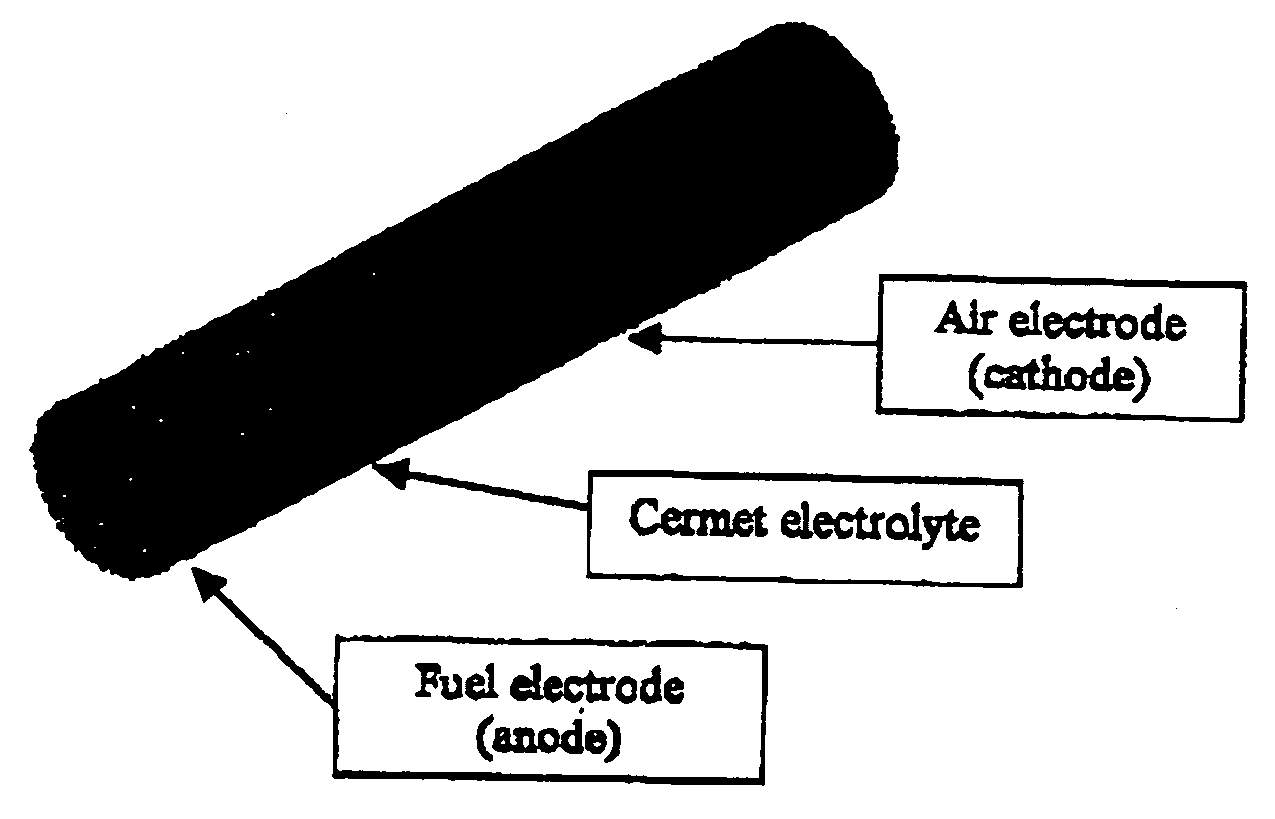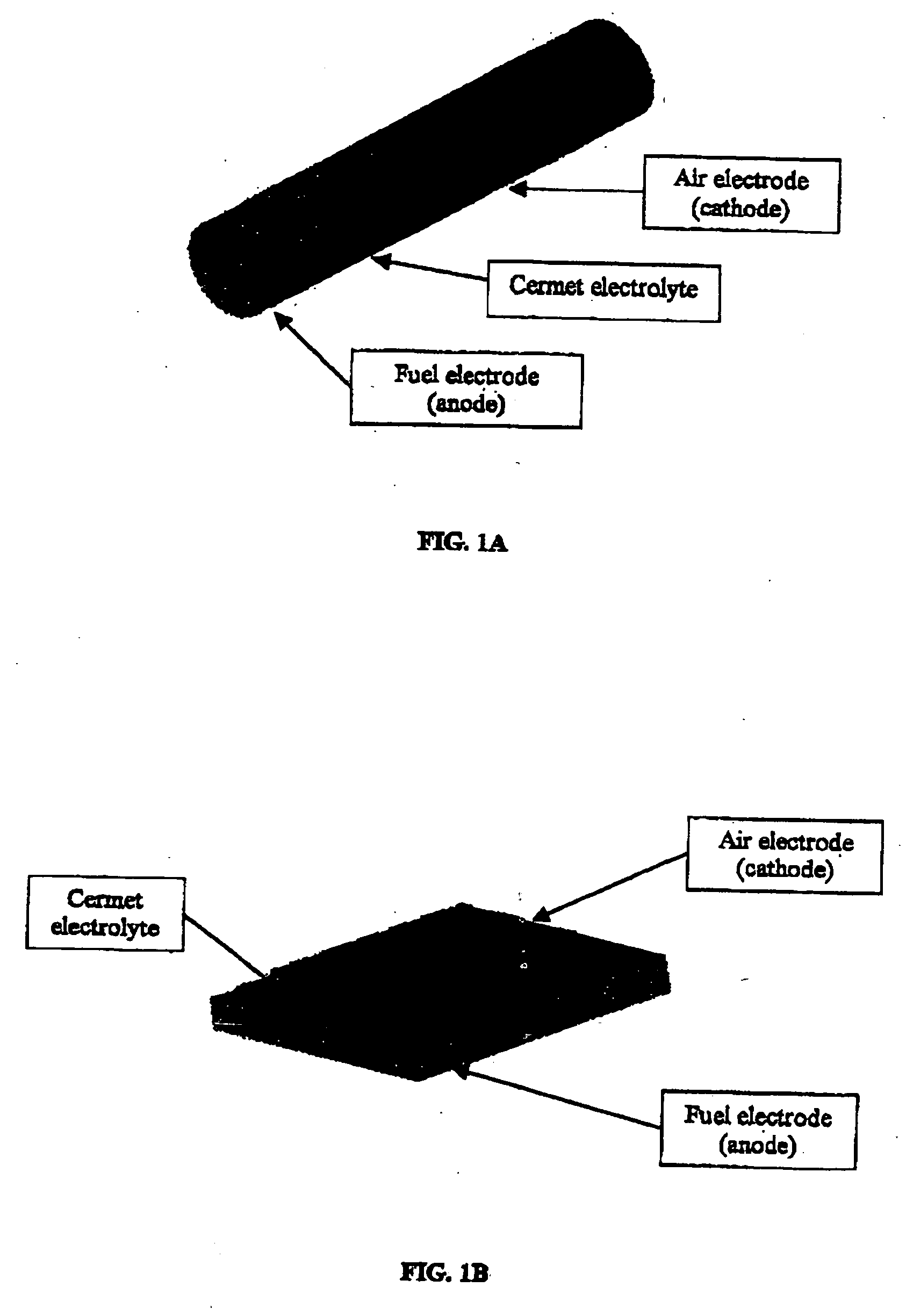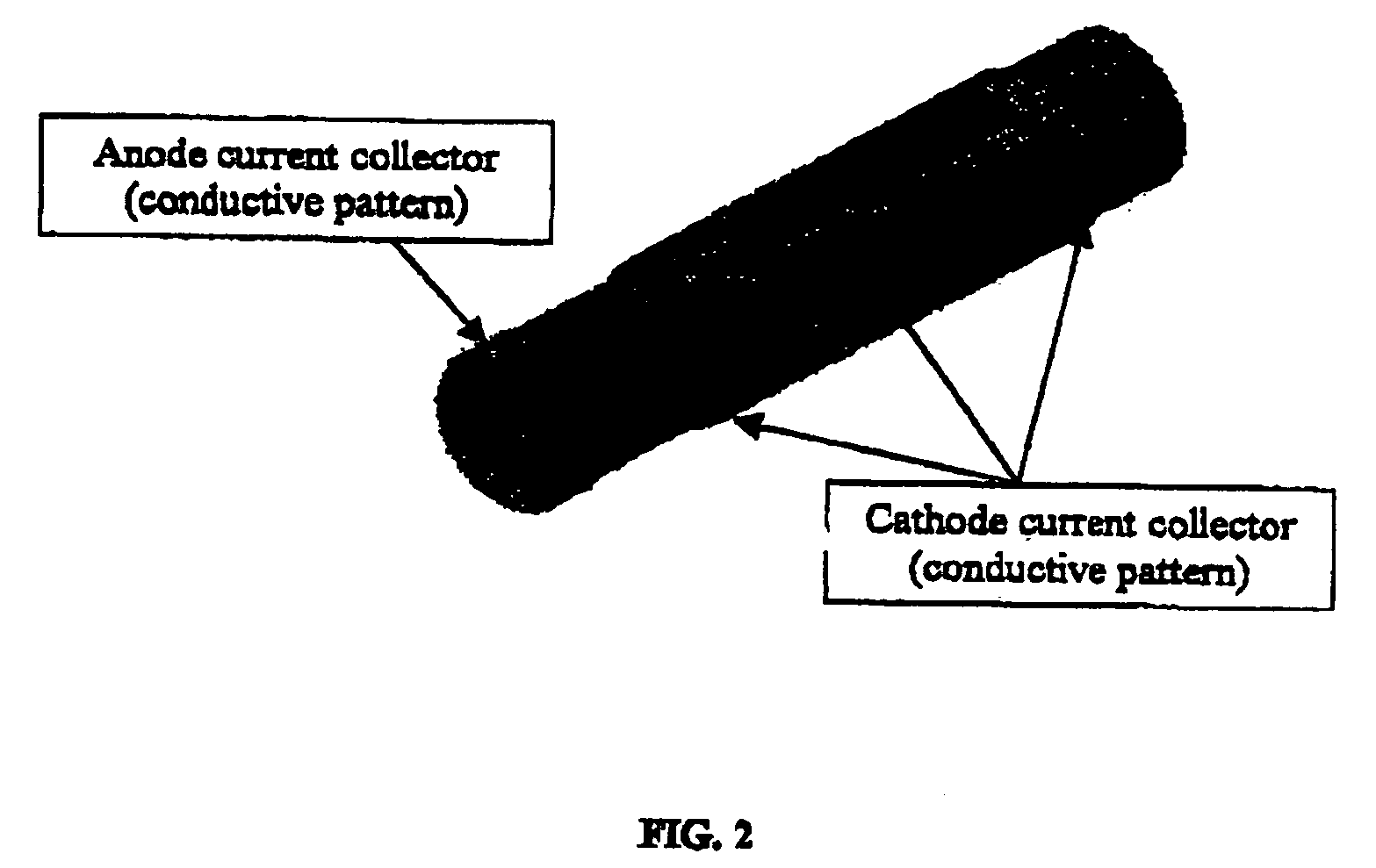Methods for the electrochemical optimization of solid oxide fuel cell electrodes
a fuel cell and electrode technology, applied in the field of solid electrolyte type fuel cells, can solve the problems of affecting the type of seals, adding complexity to the overall design, and affecting the efficiency of fuel cells,
- Summary
- Abstract
- Description
- Claims
- Application Information
AI Technical Summary
Benefits of technology
Problems solved by technology
Method used
Image
Examples
examples
[0070] The following examples illustrate the present invention, which are set forth to aid in the understanding of the invention, and should not be construed to limit in any way the scope of the invention as defined in the claims which follow thereafter.
[0071] The inventor data indicate that a pre-reduced and tested fuel cell when treated with the wash-coat composition of the present invention may have generally a 30-50% increase in power output, compared to that of a control fuel cell. The wash-coat composition of the present invention often has a greater influence on otherwise poorer performing fuel cells, increasing its power output by as much as a 10-fold. Sequential applications of the wash-coat also may produce additional power gains, although these are smaller in magnitude.
PUM
 Login to View More
Login to View More Abstract
Description
Claims
Application Information
 Login to View More
Login to View More - R&D
- Intellectual Property
- Life Sciences
- Materials
- Tech Scout
- Unparalleled Data Quality
- Higher Quality Content
- 60% Fewer Hallucinations
Browse by: Latest US Patents, China's latest patents, Technical Efficacy Thesaurus, Application Domain, Technology Topic, Popular Technical Reports.
© 2025 PatSnap. All rights reserved.Legal|Privacy policy|Modern Slavery Act Transparency Statement|Sitemap|About US| Contact US: help@patsnap.com



